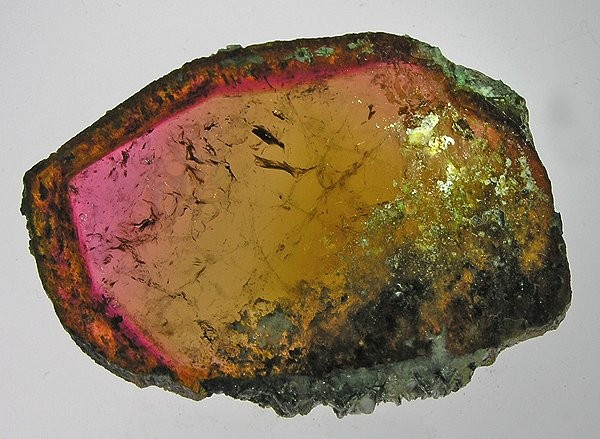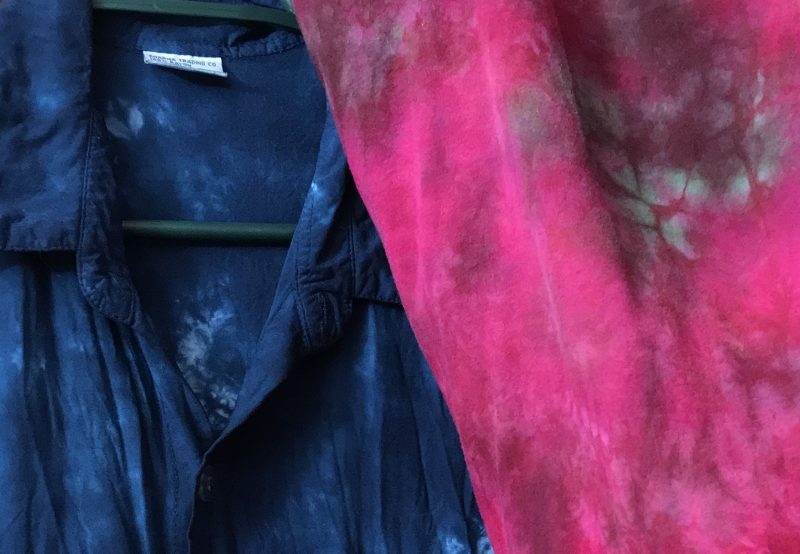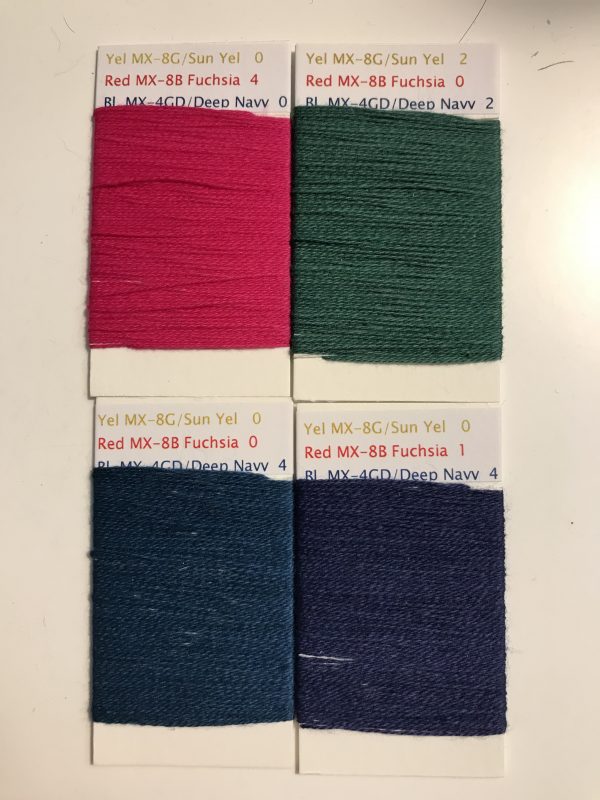I know I’ve been delinquent with the blog updates. I’ll plead that it’s been quite the month! Fortunately, in a very good way.
Janet Dawson and I decided to team up and teach a weave-along about weaving from your stash. We thought we’d get five hundred, maybe a thousand students, tops. Instead, we had over THREE THOUSAND WEAVERS sign up!! We were delighted, but also a wee bit overwhelmed. As a result, we both more or less dropped off the map for about a month.
I did get the sample warp onto the loom and weave the first set of samples for Tourmaline Butterfly. I was doing a rendition of this image:
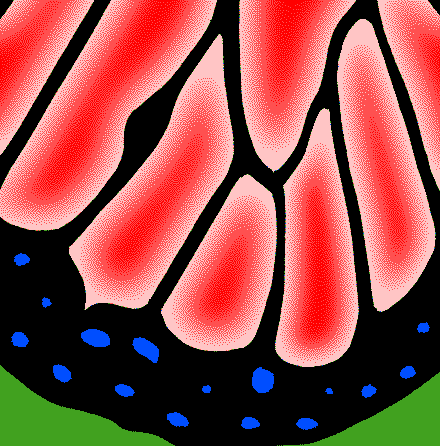
The concept is that the cape, when the arms are spread, looks like butterfly wings, with dark green veins coming out from the body of the wearer and ending in the border of dots. The interior of the “wings” portion is intensely colored and shaded out towards the veins to give a dimensional effect.
For the folks who like technical details (if you don’t, just skip to the next paragraph): in all the samples, I used a point threading and a networked rosepath treadling in the pink areas (the tie-up is twill), and a brick-like fancy twill pattern in the green areas. It’s double weave, so the pink is one layer and the green is another layer, stitched together periodically so the fabric comes out as a single layer.
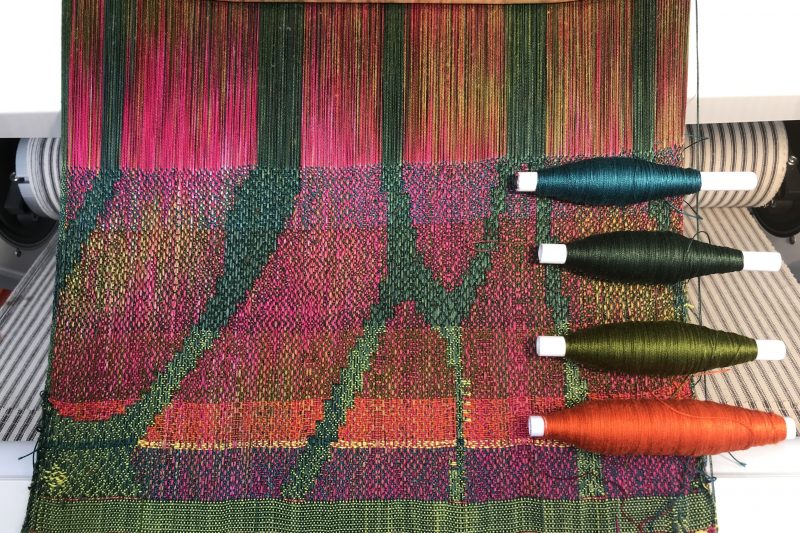
As you can see, the colors are pretty disappointing. I was hoping for some nice hue contrast and a clear, distinct pattern, but there simply wasn’t enough value (light/dark) contrast, and the chunks of color blended into each other even from a relatively short distance, muddying the bright pink into a dull brown.
I sat down and thought about it. I was facing a difficult color dilemma. Green and magenta, the two colors in the bright part of my painted warp, sit opposite each other on the color wheel. That meant that practically any color I chose as weft would blend into a dull color with one or the other of them. The only two exceptions were yellow and turquoise, both of which were strong-minded colors that would shift the colors away from the magenta and green I wanted. And yellow in particular is a super-assertive color that would probably drag attention from the painted warp (yellow is such a diva!).
Nonetheless, I thought I’d give them a shot.

None of these were what I wanted – the blue was about the same darkness as the magenta, producing a nearly invisible pattern. The yellow produced a bright result and a clear pattern, but HOO BOY!! took over the entire piece – entirely predictably, and not at all what I wanted.
I thought about it some more and eventually decided that this section was all about magenta, and it would be okay to lose some of the oomph of the green. So I decided to try a dark, dull magenta weft. Using a darker, duller weft is a great way to bring forward the colors in a painted warp (because the eye is more attracted to light, saturated colors), and using a similar color would reinforce the magenta.
This led me to Sample #3:

In the previous samples, I had felt that there wasn’t enough of the painted warp showing due to the shading from the center to the outside of each section (it goes from showing more weft near the outside of each pink section to showing more warp on the inside). So I switched it to showing mostly warp throughout the entire section.
But on seeing it, I decided the sample looked too “flat”. So I wove sample #4, which was Just Right:

I like this sample a lot. The darker magenta weft gives it subtle motion without significantly diluting the intensity of the pink areas, and the very subtle shading from dark outside towards lighter inside of each pink area gives it a subtle sense of three-dimensionality. I think for the final piece I will want to make the weft a bit darker, but I will have to weave more samples to be sure.
At the top of the fourth sample is another experiment with a slightly more saturated pink weft. I don’t like that one as much; it looks brighter but not as rich as the one below it. That’s interesting, considering that normally I am a bright-color magpie!
So that’s the Tourmaline Butterfly update.
Meanwhile, other things have been happening!
Jamie and I celebrated our 10th wedding anniversary! Here we are together, after a wonderful take-out meal from Manresa (three-star Michelin take-out – only in the Bay Area!). Hard to believe we’ve been married for an entire decade, but it’s true.

And yes, 10 years since my handwoven wedding dress really kicked off my weaving career. Hard to believe I had only been weaving 2.5 years when I started it!



And here it is in its home at The Henry Ford museum, being shown to some visitors.

A volunteer there told me that most garments are stored hung for space reasons, but my dress is stored flat in a special, custom-built archival box. I’m glad to hear that they are treating it as precious; I’d like to think it will be preserved for many generations to come.
Finally, the fruit trees Jamie planted seven years ago when we moved in are starting to bear fruit. Lots and lots of fruit. I have been making pie:


And, of course, the first tomatoes are ripening. An eager-beaver Sungold.

Finally, since no blog post would be complete without a cat, here is Tigress, Queen of the Laundry Pile. Because laundry is not truly clean until it has been liberally bestowed with cat hair.

Whew! What a post. But there was SO much to catch you up on!
